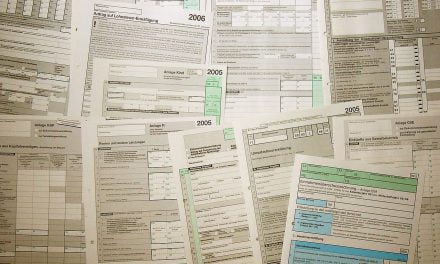California’s jobs market surpassed its pre-pandemic 2019 peak of 17.6 million total non-farm jobs in October 2022 with 17.9 million jobs. As of December 2024, nearly 18.3 million Californians were employed – and increasing.
However, the pace of our job growth began to decelerate in mid-2022. The slowdown continues with jobs growing at a slim rate of just 1.0% for the 12-month period ending December 2024. Compare this to the 1.8% annual growth rate of 2019, the last normal business year.
Meanwhile, the current housing-market recession arrived in the second half of 2022. Fees earned by real estate agents and mortgage loan originators (MLOs) were slashed. They remain severely reduced in 2025 with no indication of an upturn until after 2026.
Many DRE licensees have opted for a career change while employers are still offering the chance. Other more innovative real estate licensees have chosen to pivot, expanding their practice to include additional fee-generating transactions on the buyer- and mortgage lender-side of the market which is more active during a recession. With buyer representation now mandated to be a written agreement (or no fee is earned), tenants will more readily become buyers as they sense they are now better treated by real estate licensees as the gatekeepers to ownership.
As California exits the economic upheaval of the 2020 pandemic, another more significant business cycle recession is tightening its grip on jobs, and thus the housing markets. Watch for job losses to likely begin after mid-2025.
Home sales volume and prices will not find a recovery from the present stagnant downturn until around 2027-2028. By then, it is likely the California economic bottom level will appear, setting the stage for our next sustainable expansion.
Chart 1

*Data not seasonally adjusted
Chart update 01/27/25
| Dec 2024 | No 2024 | Dec 2023 | |
| Total CA Employment | 18,276,400 | 18,276,300 | 18,090,600 |

Chart update 01/27/25
| Dec 2024 | Nov 2024 | Dec 2023 | |
| Annual CA Employment Change | +1.0% | +1.2% | +0.74% |
Data Courtesy of the California Employment Development Department (Labor Market Information Division)
All forecasts are made by firsttuesday. Forecasts are based on current data, influential factors and market trends.
Your real estate market looks first at local employment
The chart above tracks the single most important factor in determining the future for all types of real estate transactions in California: the number of people employed.
The chart reviews total non-farm employment numbers statewide. The gray bars indicate periods of economic recession (as tracked by the National Bureau of Economic Research).
Some key points to pay attention to:
- Jobs peaked in November 2019 at 17,759,300.
- Jobs recovered from 2020-2021 pandemic job losses, exceeding the 2019 jobs peak in October 2022.
- California was slow to rebuild jobs after the 2008 recession. We did not regain sufficient jobs to account for the interim population increase until mid-2019, just before the pandemic hit in February 2020.
The number of jobs in California directly impacts statewide residential occupancy – by both tenants and owners. Without a paycheck, few have the ability to rent an apartment or buy a house.
The financial basis for an individual’s creditworthiness, essential for most to lease a residence or obtain mortgage funds to buy a home, is:
- a paycheck;
- self-employed earnings from a trade or business; or
- income from investments – not profits from sales of assets.
When jobholders buy a home today, their financial decision to buy a property is influenced by:
- down payment saved or available;
- annual gross income in a household from all sources;
- interest rate on a 30-year mortgage;
- installment payments on household debt;
- operating costs of owning the home;
- home price timing during the business cycle; and
- distance of home from employment and family services.
Of all the factors affecting our economy, employment throughout California’s population has the most impact on the vigor of the real estate market during:
- good economic times;
- times of financial crisis; or
- economic recession.
Demand for all types of real estate increases with the number of local jobs, as occurs during periods of economic development or boom. Additions to the local labor force tend to drive rents and prices up on properties in the vicinity. Job growth results in local construction of homes, apartments and most types of commercial structures.
On the other hand, a decline in the number of local jobs reduces the need for all types of real estate, as occurs during a recession. Likewise, reductions in local employment lead to lower rents and prices paid by tenants and buyers for the occupancy and use of real estate.
The recent trend in the number of individuals employed in a region sets the direction for the:
- volume of rentals and sales transactions in the local real estate market; and
- movement of rents and prices paid for the use and occupancy of all types of real estate in the following months.
Other jobs issues affect the level of rents and prices paid for property, such as:
- number of employed individuals;
- number of job openings available; and
- types of jobs existing and developing in the local market.
For instance, when a community relies heavily on the construction industry – such as the Inland Empire during the Millennium Boom – construction employment changes directly impact the local housing market. In the Inland Empire, the employment picture became particularly grim following the 2007 downfall of the construction industry.
To get an idea of what type of job growth your community can expect in the coming years, here is a projection by California’s Employment Development Department on the percentage of growth to take place between 2022-2032:
Mining and logging -9.7% Construction 11.1% Manufacturing 1.8% Trade, transportation and utilities 5.0% Information 7.0% Financial activities 2.9% Professional and business services 11.8% Educational services (private), health care and social assistance 21.9% Leisure and Hospitality 10.5% Other services 7.5% Government 2.8%
Quantity of employed individuals
Historically, jobs in California create homeowners and tenants on an approximately 50:50 basis. Roughly half of all households own the residence they occupy and the other half rent. This ratio became badly skewed during the Millennium Boom when the California homeownership rate increased to an unsustainable 61% for our highly mobile population.
Our state’s homeownership rate has declined dramatically since 2006. As of Q3 2024, the homeownership rate is 55.0%, right at our state’s stabilized equilibrium rate of 55% owner-occupancy before the Millennium Boom.
This rate is unlikely to rise much in the coming years due to illusions of home pricing and the increasing tendency to rent in higher-density urban locations, where the flexible and better-paying jobs are found.
The rise or fall of property values is triggered by increases and decreases in:
- local population density; and
- the economics of local jobs (read: numbers, skills and pay levels).
The unemployment rate has no effect on the present real estate market. The unemployed and underemployed are unable to rent or buy real estate — most first need a fulltime job to do so.
Related article:
First nonresidential, then residential set the trend
The loss of jobs has a ripple effect on all types of real estate, not just housing. As employees are shed, the need for office space, commercial space and industrial space reduces by an equal or greater amount. Subleases, reduced rents and vacancies across all segments of California’s real estate economy are the direct results of job loss.
As nonresidential vacancies increase, single family residential (SFR) vacancies likewise soon increase.
California has 14.8 million housing units and 18.3 million individuals employed in 2024. Roughly four dwelling units for every five individuals employed.
Thus, California has about four-fifths as many homes as people on payroll. More meaningfully, 55.0% of households in California own the home they live in as of Q3 2024. Most homeowners are employed.
With every ten jobs lost, six people will not be able to purchase a home or retain the home they already live in (unless they have cash reserves). The remainder simply are not able to pay rent and will lose their housing. The reverse occurs when payroll numbers increase.
Forecasting the local job market
While readers are fed national payroll data by the media or other pundits, they need to distinguish between what specifically is happening to California jobs and what generally is taking place elsewhere. Earnings from a job in Kansas do not benefit California real estate.
California took a disproportionately greater hit to jobs during the 2008 recession in comparison to national averages. The magnitude of California’s 2005 real estate bubble exceeded those of all other states (except Nevada and Florida) in terms of its negative impact on price, lending, construction, speculation and anticipation of demand.
The Great Recession’s impact on the housing industry was equally severe. In turn, the 2012 commencement of the recovery became a protracted bumpy plateau and took longer than the rest of the nation to correct due to its recent past’s excesses.
What happens in a commodity economy such as Texas, and in every other state, has little relationship to what happens in California, a state defined by its geography, not just the continental divide.
Jobs are further localized within California’s individual counties. San Francisco was the first county to regain (and quickly exceed) all jobs lost during the Great Recession including population gains since 2007. This recovery was primarily due to its large technology industry, which swiftly recovered, as is taking place in 2024 with its artificial intelligence (AI) community.
Other counties, particularly Los Angeles and Riverside, did not recover lost jobs until 2018 and 2019. These regions were heavily dependent on the housing and construction industries during the Millennium Boom and struggled in recovery.
When constructing your own local jobs forecast, the types of jobs available significantly influence the job market’s rate of growth. This information is available from California’s Employment Development Department.
Related article:















While California has achieved a full job market recovery from the 2020 recession, there are indications that a more significant economic recession is looming.
Property managers look after an investment property, dealing with maintenance issues and screening renters. Good analytic abilities and a sharp eye for detail are essential here, as is familiarity with local regulations and ordinances.
The impact of the economic downturn on the housing industry was equally severe. In turn, the bumpy and long plateau road of recovery takes longer than the rest of the country, as we correct the excesses of the recent past.